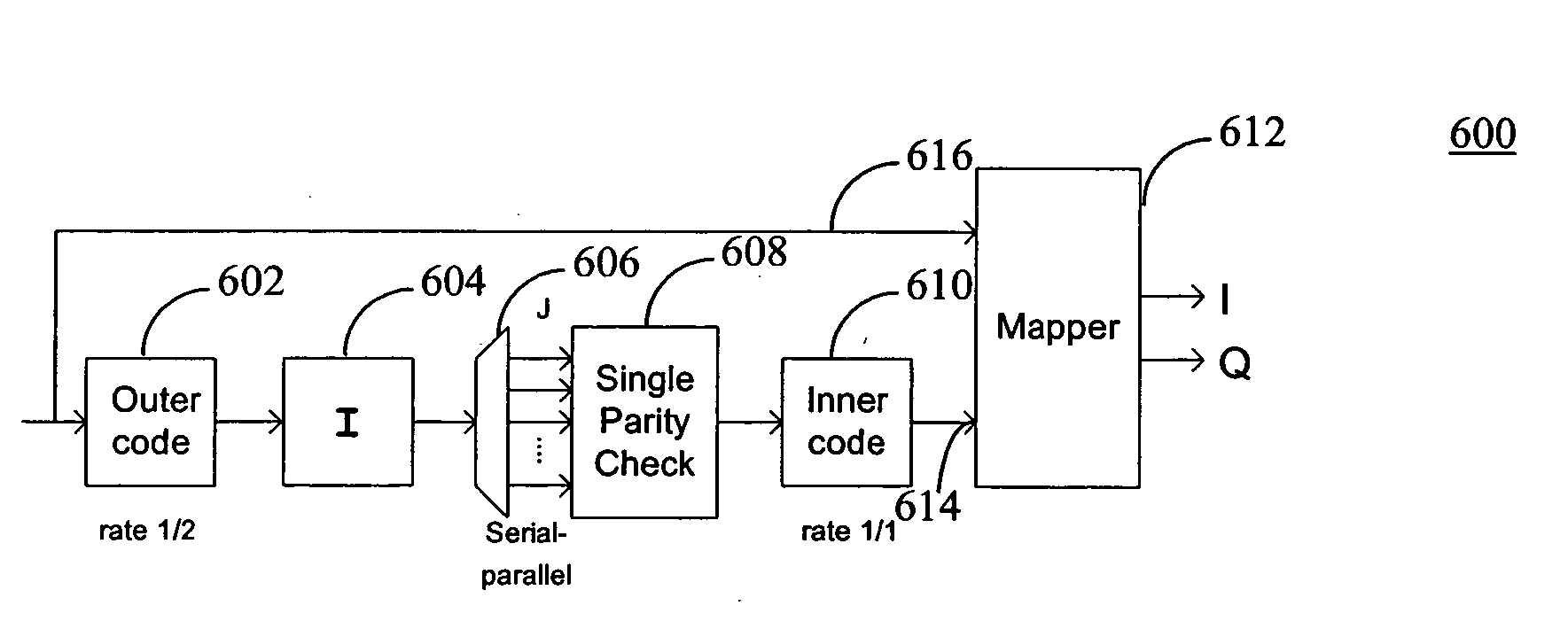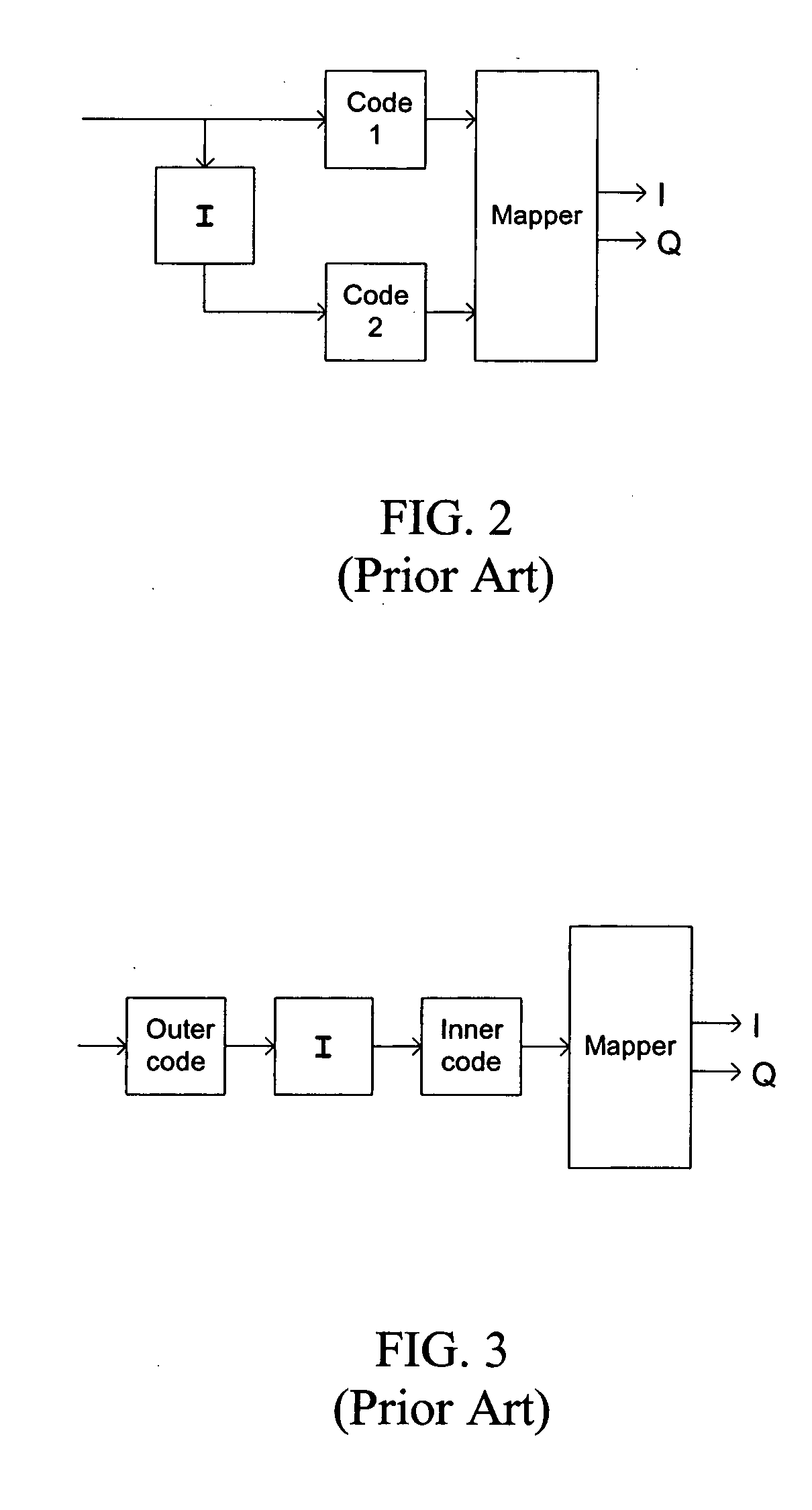Method and apparatus for communications using turbo like codes
a technology of turbo and like codes, applied in the direction of code conversion, code conversion, error correction/detection by combining multiple code structures, etc., can solve the problems of data containing errors, tlcs have an almost flat error floor region, and deteriorate the quality of data transmitted or stored
- Summary
- Abstract
- Description
- Claims
- Application Information
AI Technical Summary
Benefits of technology
Problems solved by technology
Method used
Image
Examples
Embodiment Construction
[0039] Encoder
[0040]FIG. 6 is an illustrative block diagram of an encoder 600 for an improved error correction coding scheme according to one embodiment of the present invention. Here, encoder 600 comprises an outer code module 602, an interleaver 604, a serial to parallel converter 606, a single parity check (SPC) module 608, an inner code module 610, and a mapper 612. As shown in the figure, encoder 600 generates a systematic code. In other words, both the encoded bits generated from the input bits, as well as the input bits themselves, are sent through the channel. The channel as described here broadly refers to a medium of data transmission or data storage that potentially introduces errors in the data.
[0041] As shown in the figure, input bits are first encoded by outer code module 602. In this example, outer code module 602 implements a rate 1 / 2 convolutional code with a time-varying trellis. In other words, the trellis that represents the behavior of this convolutional encod...
PUM
 Login to View More
Login to View More Abstract
Description
Claims
Application Information
 Login to View More
Login to View More - R&D
- Intellectual Property
- Life Sciences
- Materials
- Tech Scout
- Unparalleled Data Quality
- Higher Quality Content
- 60% Fewer Hallucinations
Browse by: Latest US Patents, China's latest patents, Technical Efficacy Thesaurus, Application Domain, Technology Topic, Popular Technical Reports.
© 2025 PatSnap. All rights reserved.Legal|Privacy policy|Modern Slavery Act Transparency Statement|Sitemap|About US| Contact US: help@patsnap.com



